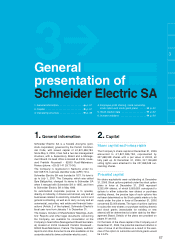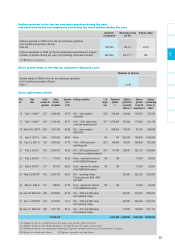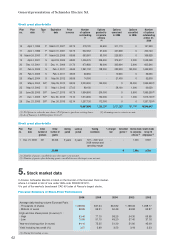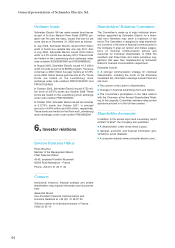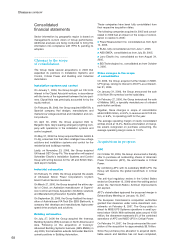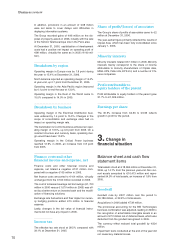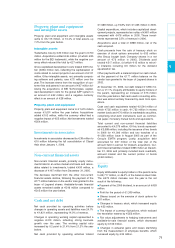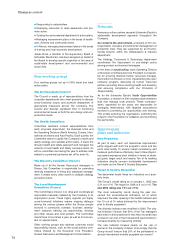APC 2006 Annual Report Download - page 69
Download and view the complete annual report
Please find page 69 of the 2006 APC annual report below. You can navigate through the pages in the report by either clicking on the pages listed below, or by using the keyword search tool below to find specific information within the annual report.
Optimized resources
The Group continued to re-balance costs and sales
within currency zones while optimizing its production
base.
Stepped-up measures to increase productivity were
taken in all countries to offset the higher cost of raw
materials, energy and transport. The Group achieved
productivity gains of 307 million during the year.
The supply chain was rationalized with the closure of
centers and expansion of platforms with a broader
scope.
Support functions were slimmed down and concentrat-
ed in mature countries, and new resources were
deployed in emerging markets, notably for R&D, mar-
keting and services.
Employees
Competencies and commitment
The Group is implementing a single human resources
management system worldwide following pilot tests in
France and India in 2006.
In 2006, the Group stepped up recruitment of new
MBAs to create a reservoir of high-potential talent. It
has also increased investment in training at all levels.
Schneider Electric University has launched new pro-
grams on customer focus, innovation and entrepre-
neurial spirit. At the same time, a new manufacturing
operations institute has been created at the Group
level and a training institute has been opened in China.
Occupational health and safety action plans have led
to a significant decline in the lost time injury rate per
employee.
Lastly, a new worldwide employee share purchase
plan has been prepared for launch in the first half of
2007. It will be open to approximately 70,000 employ-
ees in 12 countries.
2. Operating performance
Trends in the Group’s
core markets
Industry
Demand in the Industry market rose sharply through-
out the year around the world.
In Europe, the US and Japan, the firm economy, high
profits and the need to improve productivity drove a
significant increase in corporate capital investment.
Large OEM exporters, notably in Germany and Japan,
benefited from strong demand for capital goods in
emerging markets. Machine building was also very
vibrant in China, Eastern Europe and other emerging
markets.
Non-residential buildings
The non-residential building market also benefited
from exceptional worldwide growth in corporate capital
spending in 2006. Europe saw its largest increase
since 2000, with the strongest gains in the office and
commercial building segments. Growth also accelerat-
ed in the US, particularly for industrial buildings,
telecommunication and energy infrastructure and
offices.
The market was very active in China, Australia and the
rest of the Asia-Pacific zone.
In the Middle East, oil revenues continued to support
the construction of hotels, hospitals, offices and stores.
Residential
The residential market remained on a good trend in
most of Europe, notably in Spain and the Nordic coun-
tries. Germany returned to growth for the first time in
years. Demand in Europe was supported by still attrac-
tive real interest rates and longer mortgages.
In the US, on the other hand, the residential market
contracted sharply after one of the strongest booms in
its history.
In Australia, the overall market was down slightly in
2006 despite a significant upswing in the second half.
Energy & Infrastructure
Global demand for more reliable and better quality
supply has prompted regulators and other government
agencies to invest heavily in more effective distribution
grids.
The energy market was shaped by continued uncer-
tainty over energy prices, supply security (notably dur-
ing peak periods), transmission grid interconnection
capacity and the lack of investment in generation and
transmission infrastructure.
In addition, environmental issues have become a
major concern for the entire industry, both for produc-
ers, who want to limit greenhouse gas emissions, and
for consumers, who want to use energy as efficiently
as possible.
The infrastructure market enjoyed strong growth in
2006. High crude prices are driving substantial invest-
ment in the oil and gas industry, notably in the Middle
East, Russia and North America.
Demand for water supply and water treatment infra-
structure has also increased sharply, particularly in
emerging markets. Middle Eastern nations have con-
tinued to invest in desalination units, while customers
in Europe have been investing to bring their installa-
tions into compliance with environmental legislation.
Demand for telecommunication infrastructure is back
on a growth path, particularly in the US, Europe, India
and China.
4
67


